Exhibition and guide „Serbia: Living Heritage”
Crafts in Serbia
Ways of life and economic activities in villages and towns shaped the needs that are often responded by craftsmen and women. Regardless of the size of settlements in which crafts were practiced, they imply knowledge and skills passed from generation to generation so the people would have on their disposal variety of products that enhance quality of life.
Learning from older generations is the basic precondition for practicing crafts. Mastering knowledge and skills, knowing secrets of professions, could be through informal learning in villages and small towns (e.g., shepherds and floats operators) or in larger towns and cities (e.g., shoe cleaners and dry cleaners). However, most often, men and women who choose craft as a profession spend years in learning and mastering skills to become tradesmen i.e. professional craftsmen. The process of becoming tradesmen consists three stages: intern (known as šegrt) was a beginner with none or just a little bit of knowledge about the craft; then after couple of years of learning and training he’d become apprentice (known as kalfa) on his way to become a master. Master would test an intern, but the guild would test an apprentice. If an apprentice successfully passes the test, guild will issue a certificate – Masters’ Letter that enables new master to open his own shop or stay as a partner of the master who trained him.
In traditional culture places where crafts were practiced (e.g., water mills) were ones where supernatural creatures frequented. Also, practicing some crafts (e.g., shepherds and beekeepers) are tightly connected with practicing traditional medicine.
In urban environments, craftsmen’s workshops and stalls are often community hubs of their own kind. Neighbors, acquaintances, and people passing by stop not only to be serviced by craftsmen, but also to get together, exchanging news, debating opinions, and strengthening ties of the community.
Exhibition Crafts in Serbia takes on the journey through villages and towns of this picturesque country on the Balkans. It gives insights in knowledge and skills that craftsmen and craftswomen practice, as well as social dimension of their work.
Enjoy!
Download project publications:
Shepherds
Stock farming is among most important agricultural activities in Serbia and the Balkans. Most often people keep cows, sheeps, goats and pigs. For centuries, on mountains and hillslopes, specific type of stock farming, known as katunsko stočarstvo (stock farming in the highlands) was developed. From spring to autumn shepherds were taking cattle to pastures higher on the mountains, whereas during the colder months of autumn and early spring shepherds were taking stock on the pastures nearer to the village. During the warmer months shepherds were staying with the stock in the mountains. Beside taking care that cattle des not wander, in which they were helped by specially trained shepherds’ dogs, shepherds were mastering knowledge of herbs and skills to accurately maintain cattle’s health. Together, shepherds they were devising variety of games and forms of entertainment. Being in the nature closer to the sky, shepherds developed sophisticated storytelling about the nature and the universe.
Photo description: Dragoljub Đorđević, shepherd, Deliblatska peščara (Vojvodina Province) Photo by: Maja Stošić
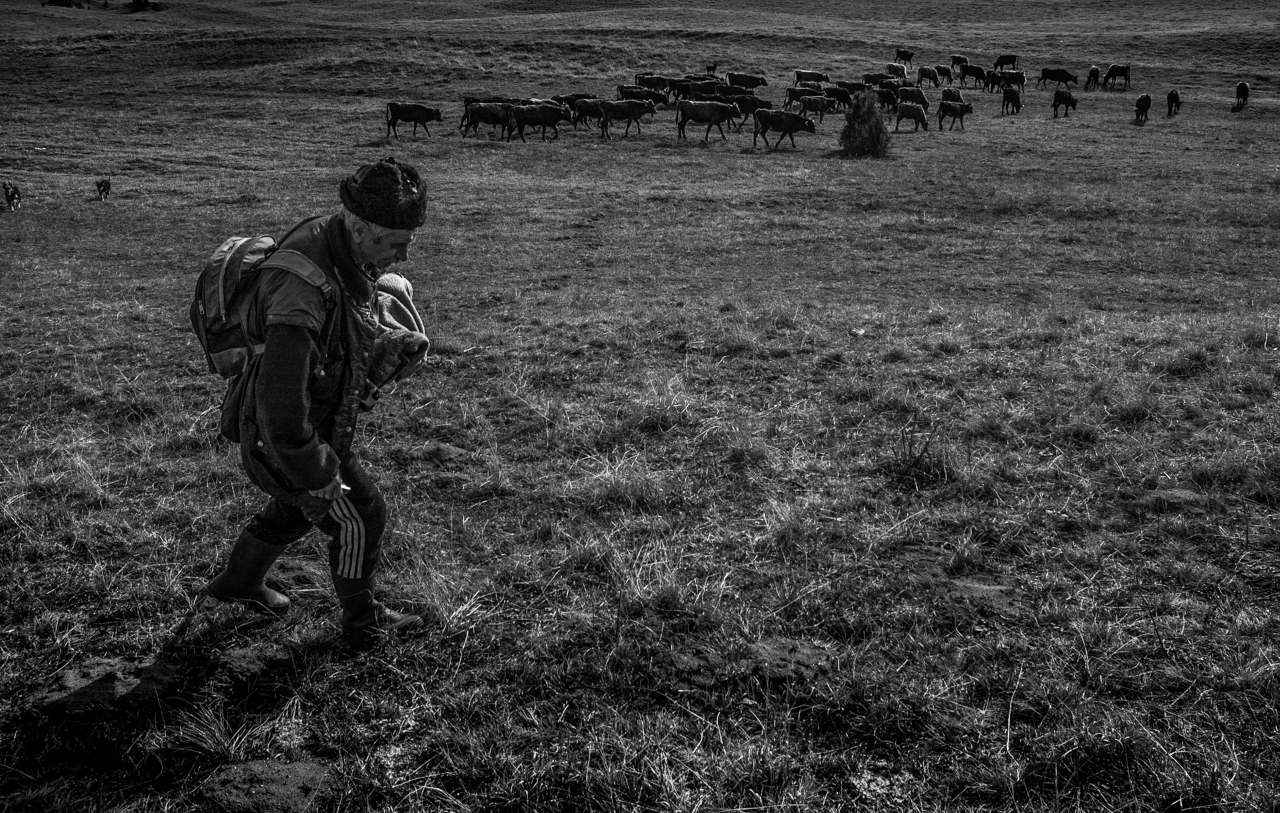
Beekeeper
Bees are sensitive creatures who play enormously important role in our environment and maintaining biodiversity. Keeping bees requires high level of knowledge about bees’ characteristics, habits, and behavior, as well as skills to approach them without disturbing their routines. Beekeeper masters such knowledge and skills.
The nutritional and medicinal value of honey, pollen and propolis has been known since ancient times, as well as the various uses of wax. In addition to the production of royal jelly, whose healing properties are increasingly recognized today, bees play an extremely important role in pollinating plants, which preserves biodiversity. Thanks to bees, at least a third of fruit trees in Serbia are pollinated. As in every agricultural branch and in beekeeping, the weather conditions are very important. The amount of nectar that honey plants secrete and the availability of pollen as well as the development of the bee community and various diseases and parasites are closely related to weather conditions. In accordance with the weather conditions, beekeepers try to provide the bees with as diverse and even as possible pasture. Considering the type of pasture, there are also different types of honey – meadow, forest, acacia, pine, etc. Each of these types of honey and other bee products has its own aroma and various medicinal properties.
Photo description: Ivan Đelić, beekeeper, Paraćin (Central Serbia) Photo by: Maja Stošić

Mill operators
Craftsmen and craftswomen who operated water mills on small rivers and streams all over Serbia were known as mlinari or vodeničari (pl.). Especially wheat and corn are very important in people’s diet in both rural and urban Serbia. Mill-operators, mastering the knowledge and skills to efficiently grind the wheat and corn, played important role in villages’ economy. They were organizing a schedule of households ought to grind and managed activities. Industrialization and introduction of engine-run grinders closed many water mills, so traditional mill operators, both male and female, are nowadays rare.
In traditional culture water mills were places considered as especially magical. Supernatural creatures, both believed to live in the water and on the ground. According to some beliefs, vampires frequented water mills. Following the famous story by eminent Serbian Writer Milovan Glišić, the most known vampire frequenting the water mill was a peasent Sava Savanović who became vampire after his death and harassed mill operators.
Photo description: Dušica Milivojević, mill-operator in the village Krivi Vir near Boljevac (Eastern Serbia) Photo by: Maja Stošić

Ferrymen
Ferry is a type of vessel that enables the transport of people, vehicles and goods across rivers, and ferryman is a carrier of knowledge and skills that ensure safe transport. In the 18th and 19th centuries, ferries across the Sava and the Danube were the main way to export cattle and other products from Serbia to the markets of Austro-Hungary and other European countries. The construction of roads and bridges over the Sava eliminated the need for scaffolding, but there were still a few scaffolds left on the Danube. One is near Novi Sad and connects Futog and Beočin, one transports passengers and goods on the route Begeč – Banoštor (also in Vojvodina Province), one is near Belgrade between Vinča and Ritopek, and one is near Ram village and fortress near the Romanian border, connecting eastern Serbia and Banat.
The job of a ferry operators is extremely responsible because it primarily means the safety of passengers, goods, and vehicles. At the ferry itself, the entrance and exit should be coordinated, the arrangement of vehicles, livestock and people should be organized so that the balance of the vessel is not disturbed. However, both ferrymen and passengers agree that ferries allow for a safe and shorter journey.
Photo description: Slavoljub Ilić, ferryman on the river Velikoj Moravi, village Trešnjevica near Paraćin (Central Serbia) Photo by: Maja Stošić

Charcoal craft
Charcoal was once mostly used by blacksmiths and potters to keep the fire burning in their workshops. Today, it is an indispensable material in the preparation of barbecues and is mainly used in the production of fast food, as well as at various informal social gatherings.
Charcoal is produced in charcoal kilns, domed brick and mud constructions, as well as in tin constructions. Depending on the size, up to 10 meters of wood can be ordered in the charcoal kiln.
To get quality charcoal, it is important that the wood is hard and dry. The type of wood depends on the climate, so in Pocerina, for example, beech, acacia, and plum are most often used, the quality of the third class, wood that is cut on the shores, in forests, wood waste, fallen trees, etc. The amount of charcoal depends on the size of the logs, which go from 8 cm in diameter and thicker. The secret of the charcoal craft lies in arranging logs. Also, it is important that when lighting the wood, kiln door and the charcoal walls are well walled up so that air does not enter it. At the same time, wood can be added to the charcoal kiln every day, but it is important that the door is carefully coated again to prevent the inflow of air. In addition to procuring wood, adding wood is also the most difficult part of the charcoal craft. In nice weather, the wood in the charcoal burns for up to nine days, after which the embers are extinguished with about 200 liters of water. After extinguishing the grill, the charcoal is packed in cardboard bags which are further distributed on the market to be used in industries and on barbeques.
Photo description: Milan Ilić and Dragan Dobrosavljević, charcoal makers near Majdanpek (Eastern Serbia) Photo by: Maja Stošić

Carpenters
Carpenters are craftsmen that produce and fix wooden furniture, doors, windows, and other wooden products. According to the type of product carpenters are differing ones who produce and fix the furniture; ones who are working in the construction making wooden enforcements of the buildings, doors, and windows; artistic carpenters who are producing decorative and other artistic wooden items; and modeling carpenters who are producing wooden models and maquettes. In their work, carpenters use different types of saws, chisels, planers, milling machines, screwdrivers, etc.
Although carpenters’ tools were developing since the ancient Egypt, the craft itself began to develop in Europe since Middle Ages when more sophisticated wooden furniture became more affordable for middle classes. Nowadays, wooden furniture and decorative items are widely spread. In its production industrialization enabled usage of various machines but the final sophisticated touches are still hand made.
Photo description: Miša Reljić, carpenter from Paraćin (Central Serbia) Photo by: Maja Stošić

Tinsmiths
Tinners are craftsmen who process and shape tin into variety of products needed in every household. For someone to become a tinsmith, he first of all had to know all the characteristics of sheet metal, as well as the ways in which it is shaped into various useful objects – gutters, pipes, chunks, funnels, tins, molds, etc. All of these items were once made by hand. and today part of the production is mechanized. The tools used are a hammer, scissors, a press, a soldering iron, a welding machine, a drill, a file, and a grinder. Using the machines also requires specific set of knowledge and skills that take years for apprentices to master.
Photo description: Slobodan Tanić, tinsmith, Paraćin (Central Serbia) Photo by: Maja Stošić

Weavers
Weaving is one of the oldest crafts created by the need to make objects that protect from the weather. Spinning plant (cotton, hemp and flax) and animal (sheep wool, goat hair) fibers has become an art over time. First, hand looms were developed, then foot pedals were added, and today weaving is largely mechanized. However, the principle of weaving remained the same – warp and weft. The base consists of longitudinal threads that are raised by means of wooden frames of leaves, and the leaves contain so-called nićanice – threads into which individual warp threads are pulled. Weft is a yarn that passes below and above the basic yarn and moves across the width of the fabric. In order to enable weaving, it is necessary to raise a part of the warp thread and lower the other part and guide the weft threads through a special yarn on a special coil – a hook (čunak). The weft can also be a yarn of a different composition and color than the warp. Thus, the fabric becomes different in texture and color, the spinning dream of weaving.
Woven fabrics are widely used in fashion industry as well as in production of various decorative and utilitarian products.
Photo description: Zorka Vukićević, weaver, village Oparić near Rekovac (Central Serbia) Photo by: Maja Stošić

Icon painters
Icon painting is a special type of painting of saints and religious scenes on wood, especially developed in the Orthodox Church. The rules (canons) created under the auspices of the Orthodox Church are passed down from generation to generation of icon painters. The basic unwritten rule is that the icon is made according to the pattern (template) of an older icon (which is a generally accepted pattern). In addition to the obligatory elements such as lightness and the use of an incorrect perspective (often called the “reverse perspective”), icon painters must well know the symbolism of colors and materials. The icon does not strive to portray the event painfully realistically, but tends to penetrate into the deeper meaning of the event it depicts. In the performances shown on the icon, the character can appear several times in different places.
There are several styles of icon painting. In the tradition of the Serbian Orthodox Church, there is the Byzantine style (which is considered an authentic style of icon painting) and the so-called “Baroque” style that is characteristic of churches and monasteries in Vojvodina. There are also icons painted in mixed styles.
The icon painter uses brushes for applying the base, sandpaper for leveling the base, accessories for gilding, a stick, an easel, painting brushes, accessories for making paint (various trays, bowls and spoons), a pencil and a compass. Gilding accessories include agate irons, a gilding pad, a gilding knife and a gold hammer. A gilding pillow is a piece of board covered with cotton wool and leather over it. It is used to cut gold on it with a gilding knife. The gilding brush is used to transfer gold from the pillow to the icon because the gold leaf is too thin to be touched with the fingers. The stick is a specific tool of the icon painter. It serves as a support for the hand when pulling moves. Without it, it would be possible to perform such precise strokes with a paintbrush.
Each icon necessarily consists of a carrier and a colored layer, and some images, in addition to these two basic layers, also have a background, gilding (special for icons) and a protective varnish layer. The icon consists of the following layers: icon carrier – board; gauze – serves as a base reinforcement; chalk and glue base; shellac – applied in places of gilding as insulation; mixtion – glue for gold; gold; colored layer; and varnish.
Photo description: Branislav S. Marković, icon painter, paints the Church of Great Martyr Marina in the village Svojnovo near Paraćin (Central Serbia) Photo by: Maja Stošić
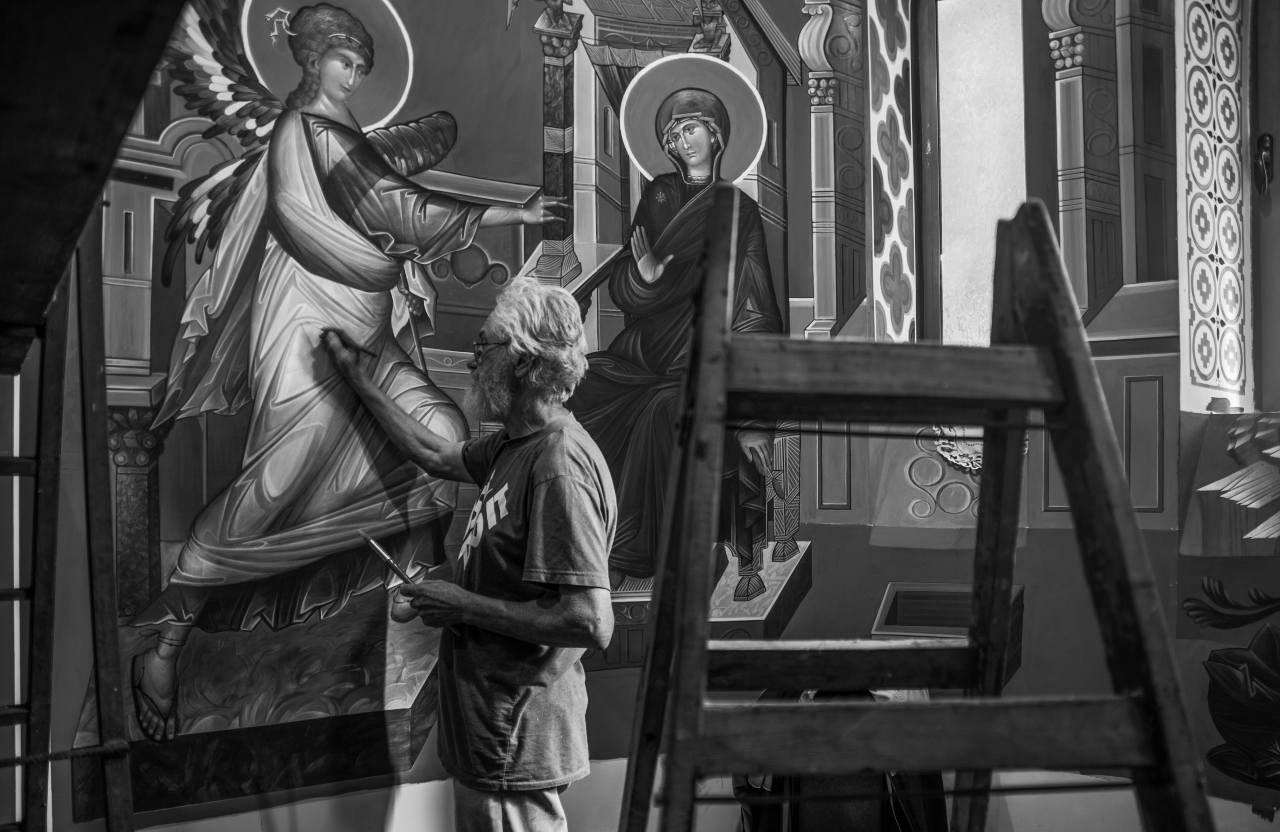
Bookbinders
The craft of a bookbinder is reflected in the skills necessary for the final part of graphic production. It includes the production of a book block and cover as well as their connection into a finished graphic product, e.g., book, magazine, brochure, calendar, diary, etc.
As an expert, a bookbinder is engaged in weaving, binding works. He or she binding documents (texts) by hand; sorts cardboard, cuts it into a longitudinal line format, prepares the binding spine from technical fabric; selects documents (texts) with numbers and forms, organizes sheets, puts sheets of cardboard from below and below and puts them in forms; drills holes, sews documents (texts), glues the spine; prepares and stick stickers on the spine and on the upper cover. Bookbinder holds knowledge and skills for restoration of old books and documents by hand. While restoring old and rare books and documents, bookbinder restores damaged connections, disinfects them, strengthens and renews corners, edges, covers, prepares new links and strengthens old connecting thorns; restores pages tied to leather covers. By practicing such knowledge and skills, bookbinders enable longevity of books and documents important for history and culture and its accessibility for new coming generations.
Photo description: Javorka Ivković, bookbinder in Paraćin (Central Serbia) Photo by: Maja Stošić

Candy makers
Candy makers are artisans who produce candy. They were most often made of sugar with the addition of various colors and extracts to make the taste as beautiful and tempting as possible. Silk candies, sugar candies, sugar apples, hot candies, sugar plates, ratluk, caramels, etc. are famous. From the mass for candies, sticks are made, the so-called “Lulice” or “luše” (small pipes), as well as sugar tablets, caramels and lollipops. Candy makers who specialized in the production of ratluk use various extracts (e.g., vanilla, roses, bergamot, etc.) or cocoa or pieces of nuts (walnuts, almonds, hazelnuts, pistachios, etc.) are added to the mixture. Ratluk is always served with coffee. Without it, coffee was known as “bald coffee”.
There are fewer and fewer candy shops today, but stands with candy products are unavoidable at fairs, fairs, conventions, and similar social events.
Photo description: Candy shop Bosiljčić, Belgrade. Photo by: Maja Stošić
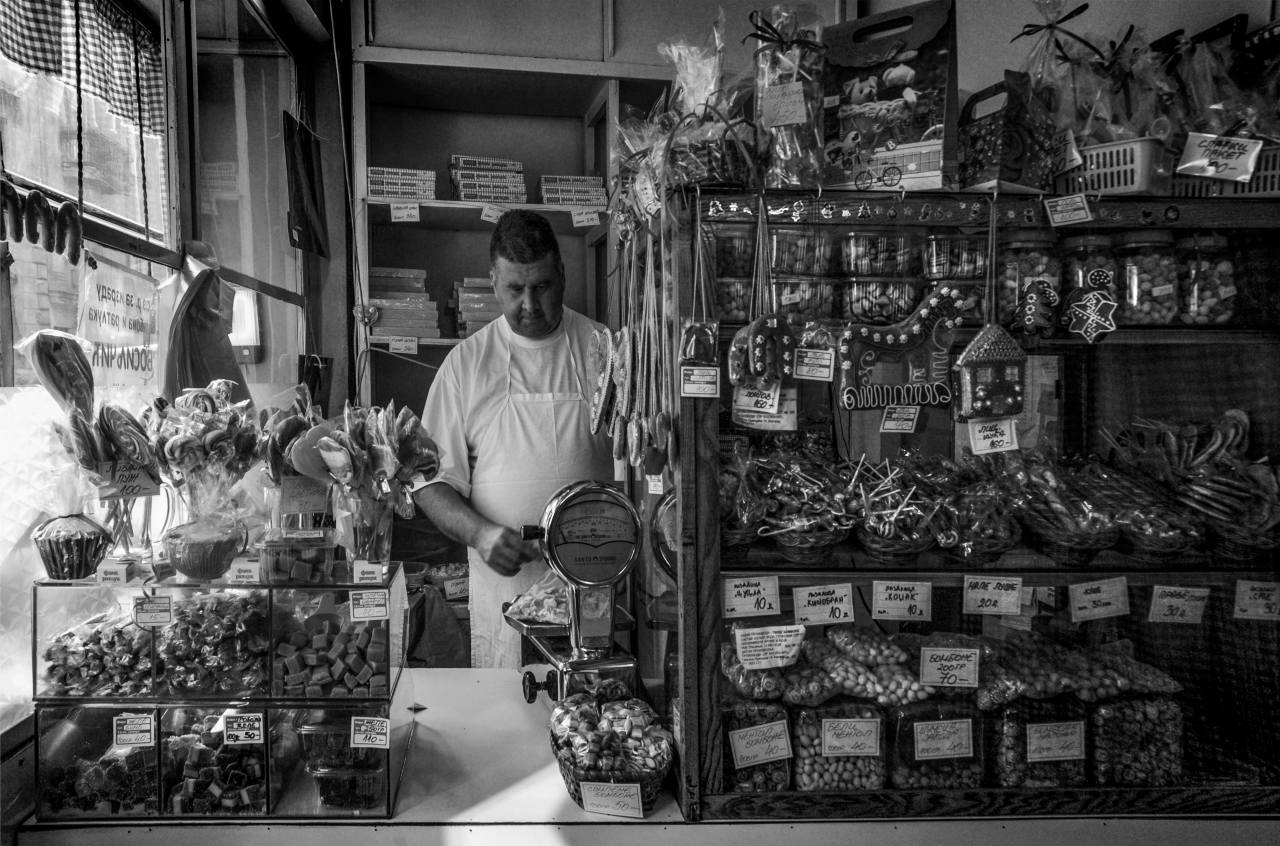
Pastry makers
In the patisserie one can find different types of sweets – ice cream, fruit salads, cakes and pies, lemonade and boza. Depending on the product, eggs, flour, sugar, butter, cocoa, chocolate, milk, and fruit are used as materials. Confectionery accessories include: various pots and bowls, molds, mixers, etc. Some of the desserts are made by machine using electric mixers and some are made by hand. In addition to ice cream, among the most famous desserts in Serbia are: šampite (egg-white cream cakes), krempite (yolk cream cakes), tulumbe, baklava, Reform cake, Doboš cake, as well as a variety of chocolate and fruit cakes. Pleasure in them is better with lemonade or boza. Among boys, patisseries were popular places for dating girls.
Photo description: Patisserie „Vesna”, Niš, owner: Stojče Jakovljevski. Photo by: Maja Stošić

Burek makers
Burek and pies are specific types of bakery products that are most often consumed for breakfast. The specificity in relation to other bakery products is reflected in the type of dough that is stretched in a special way so that it would be a crust that wraps the filling in different ways – if the filling is lightly spread it is gibanica; if it is twisted it is pie, and if it the filling is dense then is burek. When one says burek in Bosnia, it means that the filling is made of meat, but if it is a cheese filling it is known as sirnica. In Serbia, burek is a word for both types of filling, so in a burek shop it is necessary to emphasize cheese or meat.
Photo description: Burek shop owner Jovan Veljković in Paraćin (Central Serbia) Photo by: Maja Stošić

Cafe and tavern managers
Tavern managers or cafe-tenders, known in Serbian as kafedžije or mehandžije, are craftsmen who deal with catering. Catering in Serbia began to gain momentum in the 19th century. In 1861, the Decree on Taverns was promulgated with the purpose to regulate the construction and operations of cafes and taverns. In the Appendix to the Decree adopted in 1864, cafes and taverns were defined as “venues where coffee is publicly inn and every drink and meal is given”. According to data from 1930, Belgrade had 3,622 registered cafes and taverns.
Since the beginning of the 20th century, in addition to coffee with ratluk, the taverns have served mostly wine and brandy, accompanied by appetizers (salads, cheese, cream, possibly dried meat products and bread, in some traditional cooked meals). Beer began to be served more often in the middle of the 20th century. At the same time, the gastronomic offer was enriched, which brought the cafes closer to restaurants.
As famous Serbian writer and comediographer Branislav Nušić wrote in 1930s, taverns had an important place in all spheres of social life. People met there for agreements; there they scheduled appointments for work, there even lawyers consulted with the clientele, there a meeting was arranged between the matchmaker and the girl’s father, there the debtor signed a bill of exchange, a partner contract, a power of attorney, and almost all public acts, except wills, were performed in the tavern. There the societies held meetings; there politicians conspired and conspired, there often the patient asked the doctor to ask him for advice.
Photo description: Cafe and taverna Spasić in the village Raševica near Paraćin (Central Serbia). Establishment was opened in 1900. Anterior remained the same since the 1970s.
Owner: Dragoslav Spasić. Photo by: Maja Stošić

Shoe shiners
Street shoe shiners used to be a common sight on city streets. Skillfully handling brushes and mistletoe for every type and color of footwear, they provided top care and shine of shoes. They sold shoelaces and other similar products necessary for a decent appearance of shoes on mobile street stalls. They shared their knowledge and experiences with customers, smoothly engaging customers and passers-by in various conversations, which made them significant in nurturing urban culture.
Photo description: Mustafa Mehmedović, shoe shiner, Belgrade. Photo by: Maja Stošić

Dry cleaners
Coats, coats, woven suits, woolen or silk pleated skirts are clothing items that could not be cleaned in a quality way at home. Responding to the needs of the citizens to keep the wardrobe clean and tidy, dry-cleaning shops were opened in cities all over Serbia. They are equipped with machines of higher capacity than household washing machines and greater sensitivity to materials, as well as sophisticated irons and presses. Craftsmen who work in increasingly rare dry-cleaning shops master the skills for efficient removal of all types of stains on various materials. Today, it remains common to wear coats, suits and other clothing items made of more sensitive materials for dry cleaning.
Photo description: Dragoljub Đorđević, Dry cleaning shop, Niš. Photo by: Maja Stošić


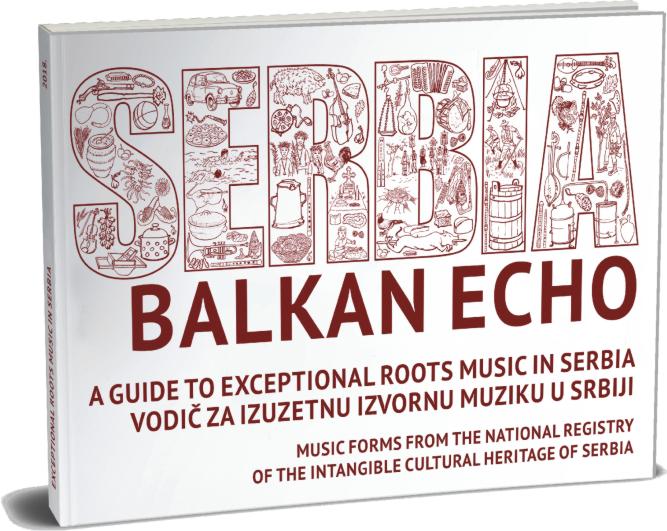
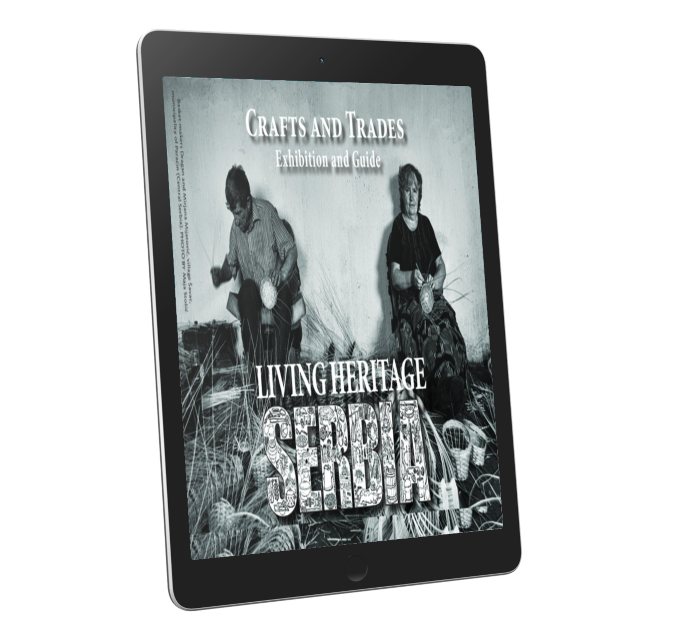


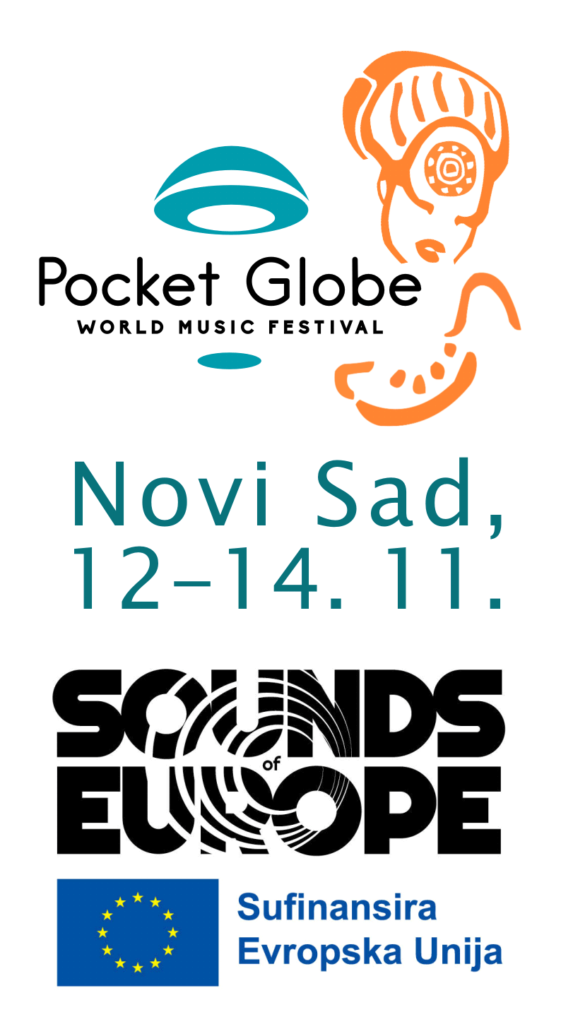
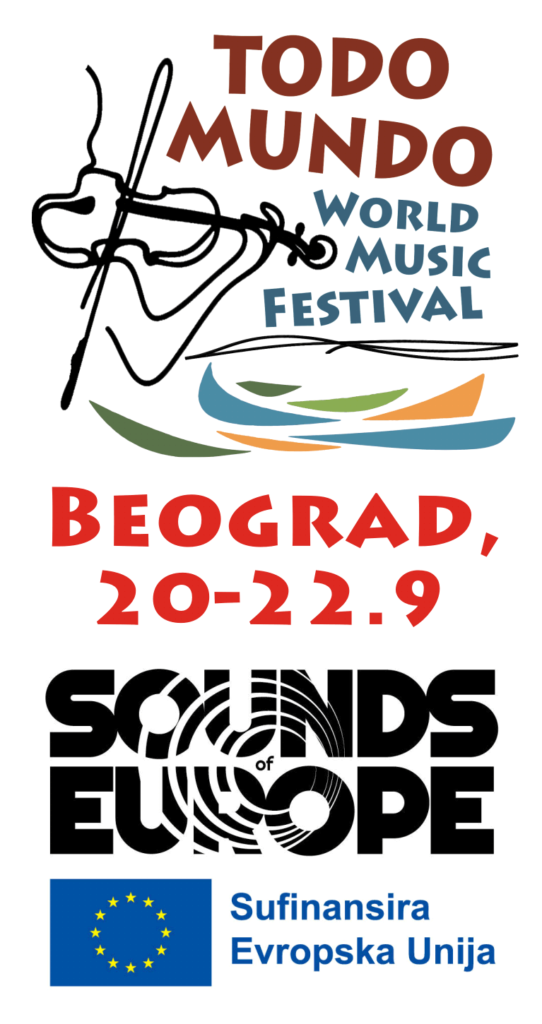











 Emisija je otvorena za sve muzičke događaje i ličnosti koje afirmišu izvorno muzičko stvaralaštvo. Ona okuplja istraživače, melografe, etnologe, etnomuzikologe i izvođače. Zaviruje u arhive i „muzejske eksponate”, oživljava legende, običaje, rituale – deo muzičke prošlosti koja i danas u tragovima živi u muzičkoj praksi pojedinih sredina. Prati promene varijanti izvornih pesama i njihovo putovanje kroz vreme.
Emisija je otvorena za sve muzičke događaje i ličnosti koje afirmišu izvorno muzičko stvaralaštvo. Ona okuplja istraživače, melografe, etnologe, etnomuzikologe i izvođače. Zaviruje u arhive i „muzejske eksponate”, oživljava legende, običaje, rituale – deo muzičke prošlosti koja i danas u tragovima živi u muzičkoj praksi pojedinih sredina. Prati promene varijanti izvornih pesama i njihovo putovanje kroz vreme.  Emisija je posvećena world music sceni, novitetima, trendovima, festivalima i novim albumima. U etru je od 2000. godine, a na Trećem programu Radio Beograda se emituje od 7. oktobra 2015. Emisiju uređuje i vodi poznavalac svetske muzike i organizator više festivala Bojan Đorđević.
Emisija je posvećena world music sceni, novitetima, trendovima, festivalima i novim albumima. U etru je od 2000. godine, a na Trećem programu Radio Beograda se emituje od 7. oktobra 2015. Emisiju uređuje i vodi poznavalac svetske muzike i organizator više festivala Bojan Đorđević.  Put svile, kao jedinstveno “radijsko putovanje”, do marta 2023. godine nedeljom je odvodilo slušaoce u neku od zemalja povezanih sa tradicionalnim Putem svile, uz aktuelna ostvarenja iz žanra “World music” i raritetne zapise tradicionalne muzike. Arhiva svih epizoda
Put svile, kao jedinstveno “radijsko putovanje”, do marta 2023. godine nedeljom je odvodilo slušaoce u neku od zemalja povezanih sa tradicionalnim Putem svile, uz aktuelna ostvarenja iz žanra “World music” i raritetne zapise tradicionalne muzike. Arhiva svih epizoda 